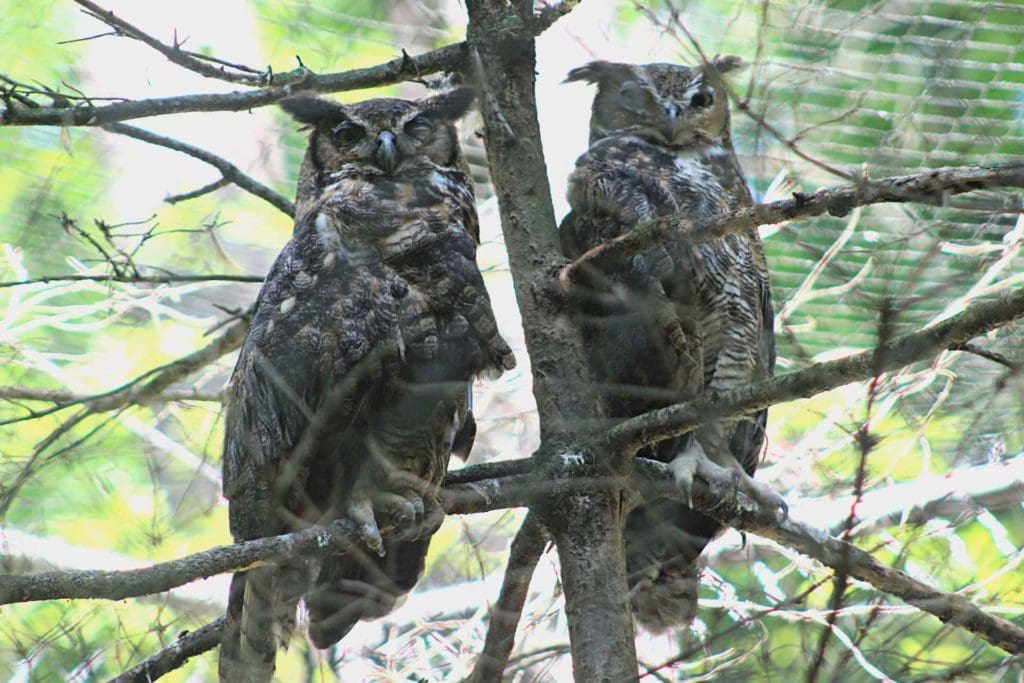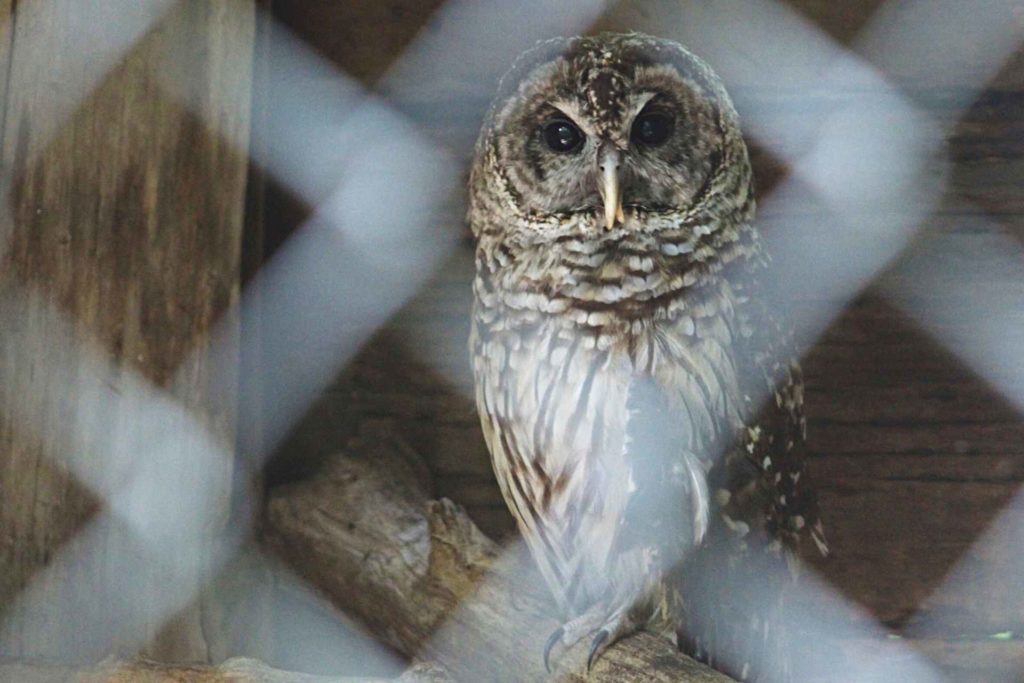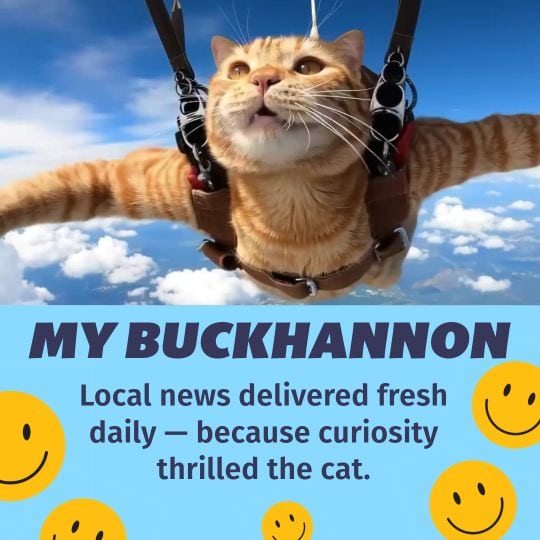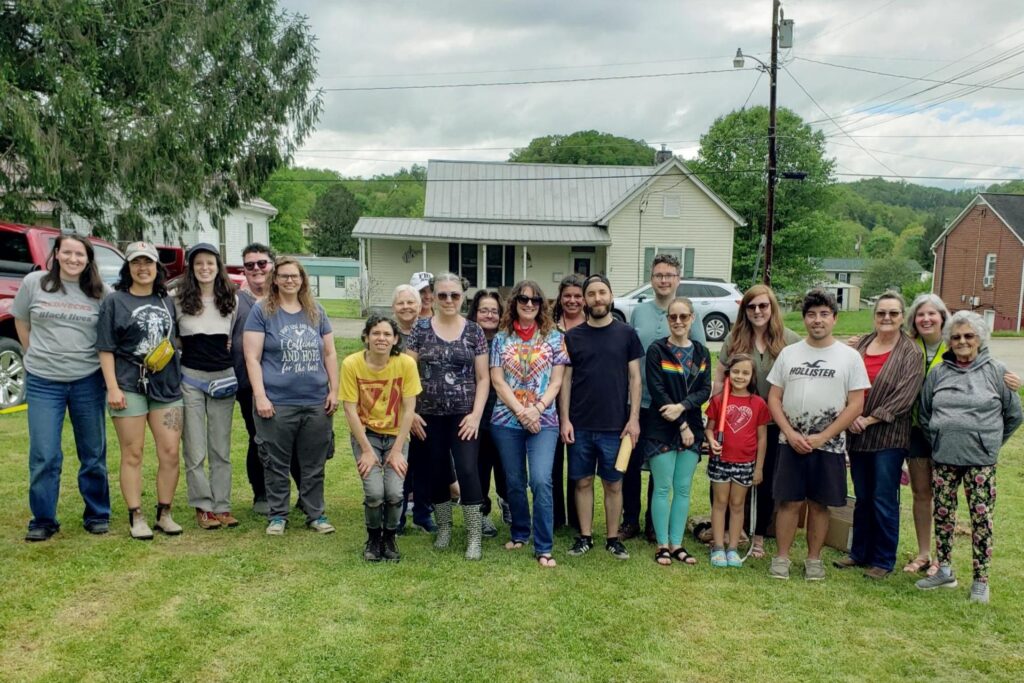FRENCH CREEK – It may be hard to hear an owl because they fly silently, and they don’t all say ‘hoot!’
The West Virginia Wildlife State Wildlife Center is home to three types of native owls, including the great horned owl, the barred owl and the barn owl. West Virginia State Wildlife Center biologist Trevor Moore said the great horned owl is one of the largest owls in North America, right behind the snowy owl.
“That’s one of the big differences [between the three types of owls] because the barn owl is actually a nice, medium size — it might even be like medium-small — and then the barred owl is medium, so that’s the biggest difference right off the bat between the three of them,” Moore said. “Their calls are all going to be very different, the great horned owl has the one most people think of when they hear that, ‘hoot’ — he’s a hoot owl, and he’s probably the one you hear like on movies or soundtracks.”
Moore said the barred owl sounds like they are making multiple calls at once and the barn owl makes screeching and hissing noises.
“The barn owl is really cool and it is actually the most widespread owl species in the world, so they are in every continent except Antarctica,” Moore said. “Part of that success, I’m pretty sure, is because they have been able to adapt to humans so well. They make their nests near human structures because they enjoy big fields, meadows and things like that.”
Barn owls have been attracted to humans since agriculture began developing and they stayed for the constant supply of rodents.
“Barn owls have a higher rate of eating than other owls; an owl that size shouldn’t eat as much as what barn owls eat,” Moore said. “They’re really good for rodent control, so much so that people have told farmers to set up owl boxes around your barns because they’re actually one of the few places that will do owl boxes.”
“Most other owls are going to want to nest in the tops of trees or in the holes with trees, and these guys will, but this is a great way for them to be around people too and it’ll be a lot safer and a lot better than doing poison for rodent control,” he added.
Most owls are fans of eating rodents, but the great horned owl has an expanded diet due to their size.
“Since the great horned owl is bigger, it does tend to be a bit more aggressive and it can eat birds, it’ll eat basically anything it can get a hold of, so that’s definitely one of the reasons why people can buy a statue of an owl to keep other birds away,” Moore said.
Great horned owls prefer roosting in tall trees, while barred owls typically live in dense forests.

“I’ve had people come here and talk about how they call for them up and down in the woods and they can hear them; it’s really cool,” Moore said. “They come out when they come out, and it’s usually more towards dusk, but there’s always individual variation — maybe some like the hours earlier in the dusk or maybe a little later in the dusk, but most owls are nocturnal.”
All three of these owls have special feathers on their head that make it easier for them to hear.
“They have concave face feathers, which is an adaptation to help them funnel sound into their ears and their ears are all slightly offset so they’re not perfectly symmetrical like ours,” Moore said. “It helps them triangulate prey better, so they have excellent hearing and having your ears at different levels on your head helps you understand where the sound is coming from better when they turn side to side.”
These owls also have special feathers on their wings that enable them to fly quietly.
“Almost all owls have serrated wing edges, so when you get down to the individual feathers and you look at the little individual feathers on the tip of all the feathers, it’s serrated, almost like the teeth on a saw, and that helps break up the wind dispersion over their wings and actually helps them fly silently,” Moore explained.
All the owls at the wildlife center are Zygodactyl, which means two toes that face forwards and two toes that face backward. However, unlike many other zygodactyl birds, however, owls can turn one of their back toes forward to help them grip and walk, Moore explained.
“When they fly in, they open up the palm of their hand, and essentially, it’s almost like a big X and that helps them hold onto their prey a lot better,” Moore said. “Owls are really cool because there are lots of birds that do that, especially ones like woodpeckers, which helps them grip going up and down the tree trunk, but what’s cool about owls is they can actually pivot one of their toes to help them walk a little because they aren’t the best walkers on the ground.”














